INTERVIEW WITH SILBATONES CREATOR, MICHAEL CHUNG
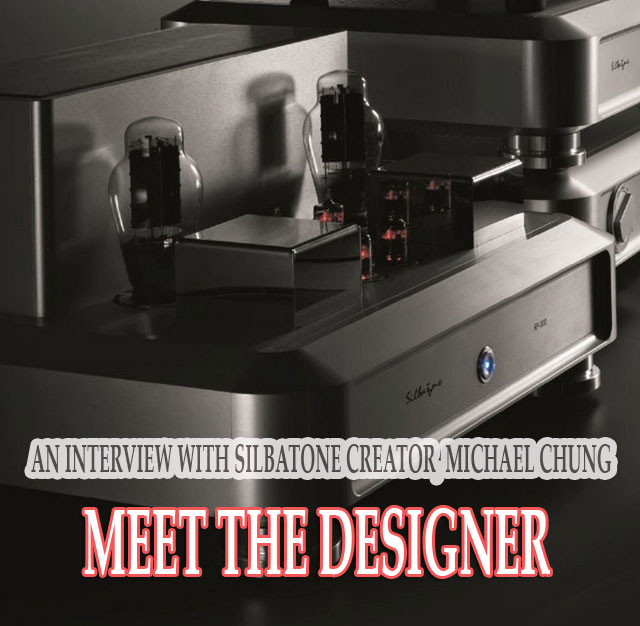
What drives a man to create a USD100,000.00 amplifier?

Why does someone, in 2017, devote a goodly chunk of his life perfecting a circuit for a tube which, for all practical intents and purposes, was no longer relevant in the late 1950s? That Michael Chung, the man and brains behind the Silbatone RP-300 (reviewed here), is not seeking to get rich off the proceeds of the sale of his amplifiers, is clear to me after speaking to the man. Like many audio designers and manufacturers, Michael’s initial drive to create the ultimate 300B amplifier came about because of his deep passion and love for that archaic tube.
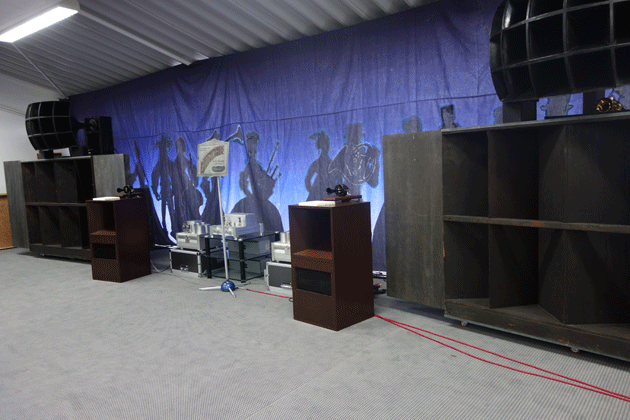
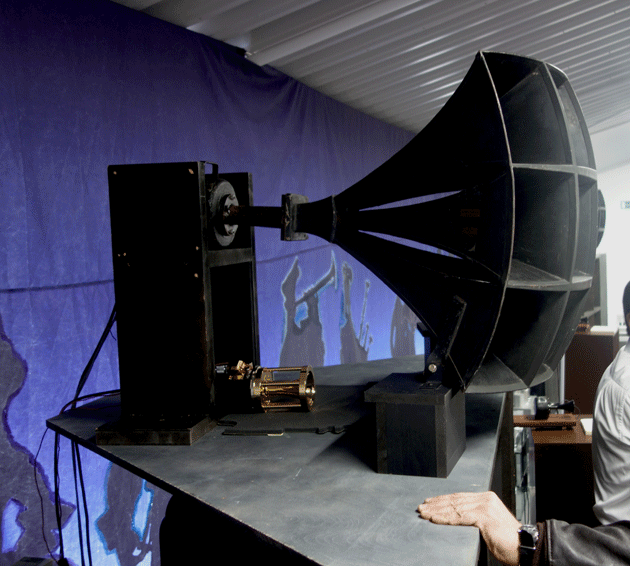
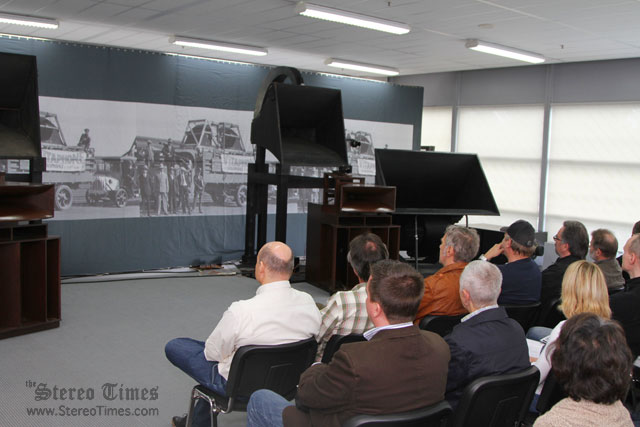
When I first met Michael Chung, nothing betrayed the anachronistic, yet strangely cutting edge, ideas that were swarming in his head. Looking very much relaxed in a pair of chinos and a polo t-shirt, Michael sipped his latte and spoke softly and casually. But he was always earnest about his company and the extraordinary products it purveys. You may have already come across the name Silbatone if you had visited the Munich Hifi Show in May 2014. There, Silbatone had shipped huge Western Electric horns to the show, not for commercial sale mind you, but simply for demonstration with 300B amplifiers. What would drive a man dig deep into his own pocket to do such a thing?
“I am the number one 300B collector in the world,” said Michael in his unassuming way, without a hint of arrogance. It was a mere fact to him, one that he was not afraid to acknowledge, and he is not one to mince his words. “I started it 30 years ago. The 300B tube that was produced in 1926 is the best quality. After that, there was pressure to make the tube cheaper, so they sacrificed sound quality. Now, there are 300B tube manufacturers in the world, China, Russia, even the Western Electric factory themselves recently [in the 1980s] but the quality is still bad, really bad. A tube amplifier must start from a good tube.”
This is the basic tenet of Michael’s philosophy, turning conventional audio thinking on its head. Needless to say it runs contrary to many other audio designers who claim that the amplifier circuit is the most important. While many manufacturers will sell you an amplifier with perhaps some slight afterthought to the tubes to use (“roll your tubes and use what you like” is usually the advice) Michael believes that any amplifier is only as good as the tube it uses. Hence his insistence on only selling every Silbatone amplifier with only vintage Western Electric 300B tubes. And his deep understanding and knowledge of the tube comes through when you talk to him. Michael knows the useful life, exact number of coatings, of the particular chemical used, on the elements of each 300B (even the more ancient ones produced prior to the 300B) down to the production year. His knowledge of the tube is not just encyclopaedic, it is astronomical. To have such a person, who obviously knows and loves the tube to such an extent, design your amplifier definitely gives you a comforting sense of certainty that you are listening to the tube at its best.
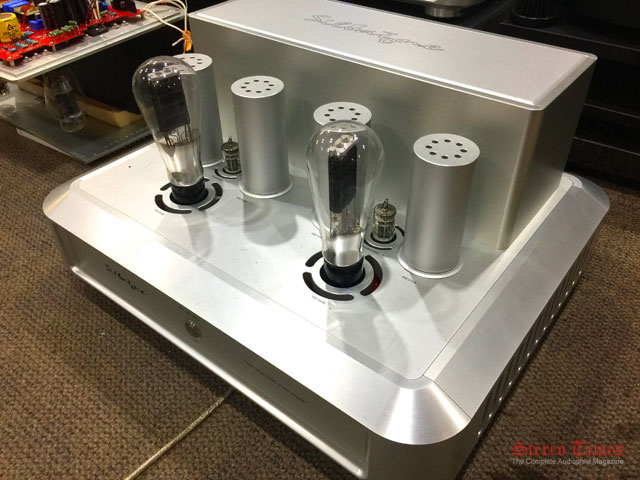
That said, the issue of tube life is bound to rear its ugly head. All of us tube lovers know the pain of spending inordinate amounts of dollars on a rare, once-in-a-lifetime tube, only to watch the pennies roll away every time the tube glows orange. So how does Michael address this problem? “Our amplifiers are under-driven,” he says. “Instead of trying to get the maximum power available, our 300B amplifier is only 8 watts per channel. But not like other 300B amplifiers, this 8 watts can do magic!” More on this later in this article.
But just using the best tube available is not going to do much good if the rest of an amplifier is not up to snuff. This is where Michael’s obsession with the best amplifier extends further – to the transformer. “Our power amplifiers are using silver foil technology. Not coil,” he hastens to add, in a bid to emphasise the importance of this fact. “Foil.” I am the only one in the world that can do that. You know that in electronics there is something called the skin-effect. If you have a wire, the electrons do not pass through the centre, but if I use a foil, I increase the surface area and better signal transmission. Theoretically everybody knows this is true, but nobody has ever proved it before. We proved it.”
Michael then goes on to explain the other element that goes into the design of their transformer. “Besides the wire, there is also the core. We use Finemet core, which is a nano-crystallized [sic] material. The reason why I use this core is because, if you use silver (like Audio Note does), you cannot use other cores because of saturation problems. But this core is free from saturation. No distortion.”
Finemet is a trademark of Hitachi Metals Ltd and refers to a range of F3CC cores that Hitachi claims result in lower core loss than other metallic materials, high saturation flux density and ability to withstand high operating temperatures. It is mainly used in sensitive high frequency applications such as X-Ray, CT scanning machines, as well as communications equipment. But is using such an exotic material in an audio amplifier overkill? What is more important? Using silver foil, or choosing the right core for the transformer? “Based on my experience, the core is more important,” says Michael. “But getting this core is not easy. In Japan, [use of Finemet cores] is monopolized by Noguchi, a Japanese company, and Hitachi was not allowed to sell to anyone else in Japan. I am not a Japanese company, so I could reach them and obtain the biggest core – the double-C core – from them, for my 5 star products.”
Silbatone, like some other manufacturers, differentiate their lines via the use of different levels. The choice of component material is dictated by the star level of a particular product. For example, both 1-star and 2-star products will use permalloy cores (albeit of different sizes), and only 3-star products and above will use double-C cores of the Finemet material. Prices will of course rise in accordance with the star level of the product in question. The highest level product from Silbatone is a 5-star product.
“I don’t like push-pull,” declares Michael, when asked what other guiding principles he employed in the designing of his products. “The only way to get more power out of a tube is to use push-pull. But when you do that, you will lose second harmonics. Second harmonics is the reason why people use tube amplifiers. We researched a lot into this topic. I have the curves to prove it. It is not as clean as single-ended and not as ‘tasty’. Also, single-ended transformers are very hard to make, but since I started making my own transformers, I can make them cover everything, including the deepest bass.”
Despite swearing off push-pull topologies, Michael is not averse to the use of sand (specifically transistors) in his amplifiers. And to a great extent, that’s how some Silbatone amplifiers derive their inexplicable magic. He explains it thus. “In a normal hybrid [design], you put the tubes in the first section, and then FETs in the second section. That is the conventional way. However, this is the transformer right?” He points to a graph he drew in front of me. “Here we add one FET, one resistor, and one FET, and this will make my tube [output] bigger. This way, I drop the voltage, drop the current, until I find the point where the sound is most beautiful. I drop the wattage to 2 or 3 watts, but I can multiply five to ten times the power, and increase the damping factor at the same time. So for example, a 45 which generally gives 4 watts, we can drive it in such a way as to get 8 watts. So the longevity of the tube is much much longer than before. Now, that is magic!”
In layman’s terms, what Silbatone’s hybrid circuit is trying to achieve is not so much that the listener hears the transistor in the hybrid circuit, but a tube amp with its power increased by transistors. The difference is not just semantic. When you hear a hybrid Silbatone in action, it can be startling. A Silbatone puny powered amplifier (8 watts) being able to drive a notoriously power-hungry current-eating speaker like the Magicos? Impossible! Until you actually hear it in action for yourself. Of course, one cannot expect concert-hall levels of sound, and at some point the amplifier did run out of steam, but I will be hard pressed to name any other 8 watt amplifier that can even come close to doing what that puny Silbatone did to the mighty Magicos. Talk about David taming Goliath! And on top of this, the true icing on the cake: we now have a precious tube whose operating points are not only carefully chosen for best performance, but whose useful life has also been exponentially increased. What more can you ask for?
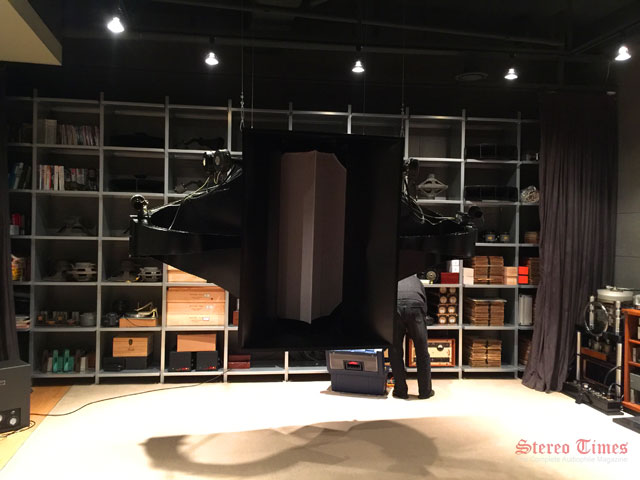
“There are many beautiful tubes out there with very small output, 2 watts, 3 watts, which people could never use before. Now, with this technology, we can utilise it,” Michael says proudly. The sub-text of this message, as far as I could tell, is that as much as Michael loves the 300B tube, he knows one day it will run out. But there is no reason to stick to the 300B. It is not a religion. There are other wonderful tubes produced in the same (or even earlier era) that will sound just as marvellous, if not better. I personally look forward to the day when I can listen to an amplifer that uses a pair of 45s to generate usable power instead of the puny 2 watts that it will produce at 300v plate voltage. Imagine a hybrid 45 amplifier with lowered operating points, but with output multiplied to 20 watts. What a giant killer that would be!
As the interview wore on, we talked about many more other subjects than I have space for in this article. But at the end of my interview, I walked away with a renewed appreciation for Silbatone and its eccentric founder. During the discussion, I had broached the subject of the products’ price. Michael assured me that he is working to bring out more affordable items, but he had to produce one statement product (the RP-300B) that would show the world what a true 300B amplifier, when taken to the extremes, can really do. As mentioned earlier, Michael does not rely on the company to pay his bills. He started the company to showcase the audio ideas he has learnt over the last 30 years of his life, not just about tubes, but also speakers and other related equipment. That is why he will spend his own money to ship his own collection of rare Western Electric horns from Korea to wherever he feels the audience is. He wants today’s audiophiles to understand what they are missing from ancient audio technology, much of which can still be relevant and vital even in this day and age of I-devices and other digital obsessions. That’s why he set up Silbatone, because this is the only way he knows how to bring his message across and show the world how it should really be done. And if doing it requires a certain price, then he is willing to pony up.
From my perspective, the world needs more Michael Chungs.

Stephen Yan
One thought on "INTERVIEW WITH SILBATONES CREATOR, MICHAEL CHUNG"
Leave a Reply
Stereo Times Masthead
Publisher/Founder
Clement Perry
Editor
Dave Thomas
Senior Editors
Frank Alles, Mike Girardi, Russell Lichter, Terry London, Moreno Mitchell, Paul Szabady, Bill Wells, Mike Wright, and Stephen Yan,
Current Contributors
David Abramson, Tim Barrall, Dave Allison, Ron Cook, Lewis Dardick, John Hoffman, Dan Secula, Don Shaulis, Greg Simmons, Eric Teh, Greg Voth, Richard Willie, Ed Van Winkle, Rob Dockery, Richard Doron, and Daveed Turek
Site Management Clement Perry
Ad Designer: Martin Perry





This is remarkable! The Western Electric era witnessed things that represent the pinnacle of the audio art, even by today’s standards. And people in general don’t know that such things happened in fact. Silbatone is a worldwide reference in audio to the best that can be done. Bravo, bravissimo!
Wram R. C. Accorsi robert.camar@yahoo.com.br